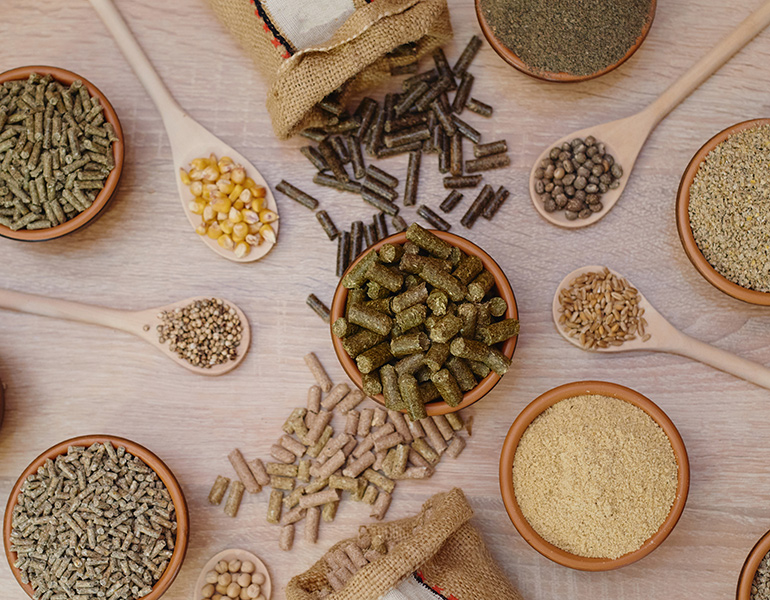The Environmental Impact of Sustainable Farming Practices
Introduction
Agriculture is one of humanity’s oldest and most essential activities, feeding billions and supporting livelihoods across the globe. Yet, conventional farming practices have also contributed to a host of environmental challenges—deforestation, soil degradation, water pollution, loss of biodiversity, and climate change. In response, sustainable farming practices have emerged as a holistic solution, aiming to balance productivity with environmental stewardship and social responsibility.
At SanaBio GmbH, we recognize that the future of food depends on how we care for the land today. This article explores the environmental impact of sustainable farming practices, highlighting the benefits, challenges, and transformative potential of a more responsible approach to agriculture.
Understanding Sustainable Farming
Sustainable farming refers to agricultural methods that meet current food needs without compromising the ability of future generations to meet theirs. These practices work in harmony with nature, focusing on soil health, water conservation, biodiversity, and the reduction of chemical inputs. The goal is to create resilient farming systems that support both people and the planet.
Key Environmental Challenges of Conventional Agriculture
Before exploring the positive impacts of sustainable farming, it’s important to understand the environmental issues associated with conventional agriculture:
1. Deforestation and Habitat Loss
Expanding agricultural land is a leading cause of deforestation, particularly in tropical regions. Forests, which are vital carbon sinks and biodiversity hotspots, are cleared to make way for crops and livestock. This destruction releases stored carbon dioxide, accelerates climate change, and results in the loss of countless plant and animal species.
2. Soil and Land Degradation
Conventional farming often relies on monocultures, excessive tillage, and synthetic chemicals, leading to soil erosion, nutrient depletion, and desertification. Over time, this degrades the land’s productivity and its ability to support healthy crops and ecosystems.
3. Water Pollution and Overuse
Agriculture is the largest consumer of freshwater globally, accounting for nearly 70% of withdrawals. Runoff from fertilizers and pesticides contaminates rivers, lakes, and oceans, harming aquatic life and human health. Over-irrigation can also lead to salinization and depletion of water resources.
4. Chemical Pollution
The widespread use of synthetic fertilizers and pesticides has led to the contamination of soil, water, and air. These chemicals can persist in the environment, disrupt ecosystems, and pose risks to wildlife and humans.
5. Greenhouse Gas Emissions
Agriculture is a significant source of greenhouse gases, including methane from livestock, nitrous oxide from fertilizers, and carbon dioxide from land conversion and machinery. The sector is both a contributor to and a victim of climate change.
The Environmental Benefits of Sustainable Farming Practices
Sustainable farming offers a comprehensive set of solutions to the environmental challenges posed by conventional agriculture. Here’s how:
1. Soil Health and Erosion Control
Sustainable practices such as crop rotation, cover cropping, reduced tillage, and organic fertilization improve soil structure and fertility. Healthy soils store more carbon, retain water better, and are less prone to erosion. This not only supports robust crop yields but also helps mitigate climate change by sequestering carbon in the ground.
2. Water Conservation and Quality
Efficient irrigation methods—like drip irrigation—minimize water waste and ensure crops receive just the right amount of moisture. Sustainable farms also use mulching and organic matter to retain soil moisture, reducing the need for irrigation. By avoiding synthetic chemicals, these farms prevent harmful runoff, protecting waterways and aquatic ecosystems.
3. Biodiversity Enhancement
Sustainable agriculture encourages polyculture, agroforestry, and the preservation of natural habitats within and around farms. This creates diverse ecosystems that support pollinators, beneficial insects, birds, and other wildlife. Biodiversity increases resilience against pests and diseases, reducing reliance on chemical controls.
4. Reduced Chemical Inputs
By using natural pest control methods, organic fertilizers, and integrated pest management, sustainable farms dramatically cut the use of synthetic pesticides and fertilizers. This not only protects the environment but also improves the safety of food and working conditions for farmworkers.
5. Climate Change Mitigation
Practices such as no-till farming, cover cropping, and agroforestry increase the amount of carbon stored in soils and vegetation. Sustainable livestock management reduces methane emissions, and the use of renewable energy on farms further cuts greenhouse gases. Collectively, these measures help agriculture become part of the climate solution.
Holistic Approaches: Eco-Friendly and Regenerative Farming
Eco-Friendly Farming
Eco-friendly farming goes beyond simple input substitution. It focuses on nurturing natural ecosystems, enhancing soil health, and promoting biodiversity. By integrating livestock, rotating crops, and using organic methods, eco-friendly farms create a self-sustaining cycle that reduces the need for external inputs and supports local communities.
Regenerative Agriculture
Regenerative agriculture takes sustainability a step further by actively restoring degraded landscapes. It emphasizes practices that rebuild soil organic matter, restore biodiversity, and improve water cycles. Regenerative farms often see increased productivity over time, proving that environmental health and economic viability can go hand in hand.
Social and Economic Impacts
Sustainable farming doesn’t just benefit the environment—it also strengthens communities and economies:
-
Food Security: Healthier soils and diverse crops lead to more reliable yields, supporting local food systems.
-
Empowerment: Training and fair-trade practices empower marginalized groups, including women and smallholder farmers.
-
Community Cohesion: Initiatives like community gardens foster collaboration and resilience.
-
Economic Sustainability: Reduced input costs and access to premium markets enhance farm profitability.
Case Studies: Sustainable Farming in Action
1. Agroforestry in Latin America
In regions where deforestation threatens biodiversity, agroforestry systems—combining trees with crops and livestock—have restored habitats, increased carbon storage, and improved farmer incomes.
2. Organic Farming in Europe
European organic farms use crop rotations, green manures, and mechanical weed control to maintain soil health and productivity. These methods reduce chemical use, protect water quality, and support pollinators.
3. Water Conservation in India
Farmers in water-scarce regions have adopted drip irrigation and rainwater harvesting, significantly reducing water use while maintaining or increasing yields.
Challenges and Limitations
While sustainable farming offers many benefits, it is not without challenges:
-
Transition Costs: Shifting from conventional to sustainable practices can require upfront investment and new knowledge.
-
Yield Gaps: In some cases, organic or low-input systems may yield less than conventional farms, though this gap often narrows over time.
-
Market Access: Farmers need access to markets that value and reward sustainable practices.
-
Policy Support: Effective government policies and incentives are crucial for scaling up sustainable agriculture.
The Role of Technology and Innovation
Modern technology is accelerating the adoption and impact of sustainable farming:
-
Biostimulants: Natural products that enhance plant growth and resilience, reducing the need for synthetic chemicals.
-
Precision Agriculture: Digital tools and sensors optimize input use, reducing waste and environmental impact.
-
Renewable Energy: Solar and wind power reduce farms’ carbon footprints.
The SanaBio Commitment
At SanaBio GmbH, sustainability is at the core of our mission. We support sustainable agriculture by:
-
Sourcing certified organic and sustainably produced ingredients.
-
Ensuring full traceability and transparency in our supply chains.
-
Investing in research and innovation to improve environmental outcomes.
-
Educating partners and customers on the benefits of sustainable practices.
Conclusion
Sustainable farming practices are essential for protecting the environment, supporting communities, and ensuring food security for future generations. By enhancing soil health, conserving water, promoting biodiversity, and reducing chemical use, sustainable agriculture offers a path to a more resilient and harmonious relationship with nature.
The transition to sustainable farming is both a responsibility and an opportunity. With continued innovation, collaboration, and commitment—from farmers, companies like SanaBio, policymakers, and consumers—we can build a food system that nourishes both people and the planet.
About SanaBio GmbH
SanaBio is a leading supplier of certified organic plant-based oils, flours, and essential oils for the food, cosmetics, and wellness industries. Our commitment to sustainability, transparency, and quality supports a healthier future for all.

 De
De
 En
En










